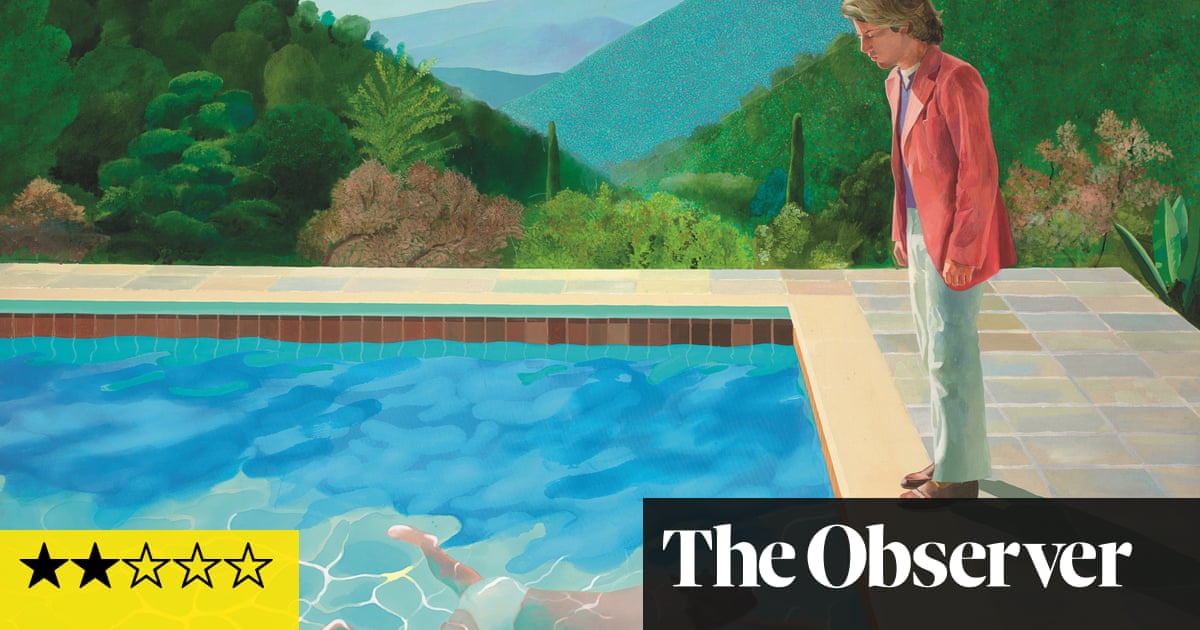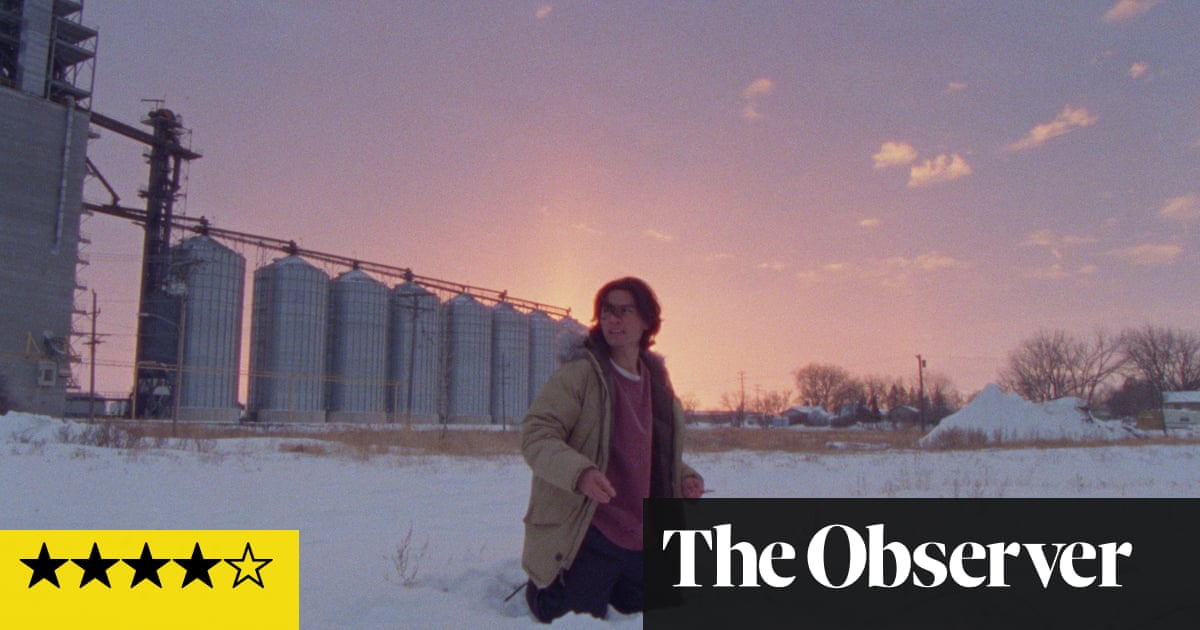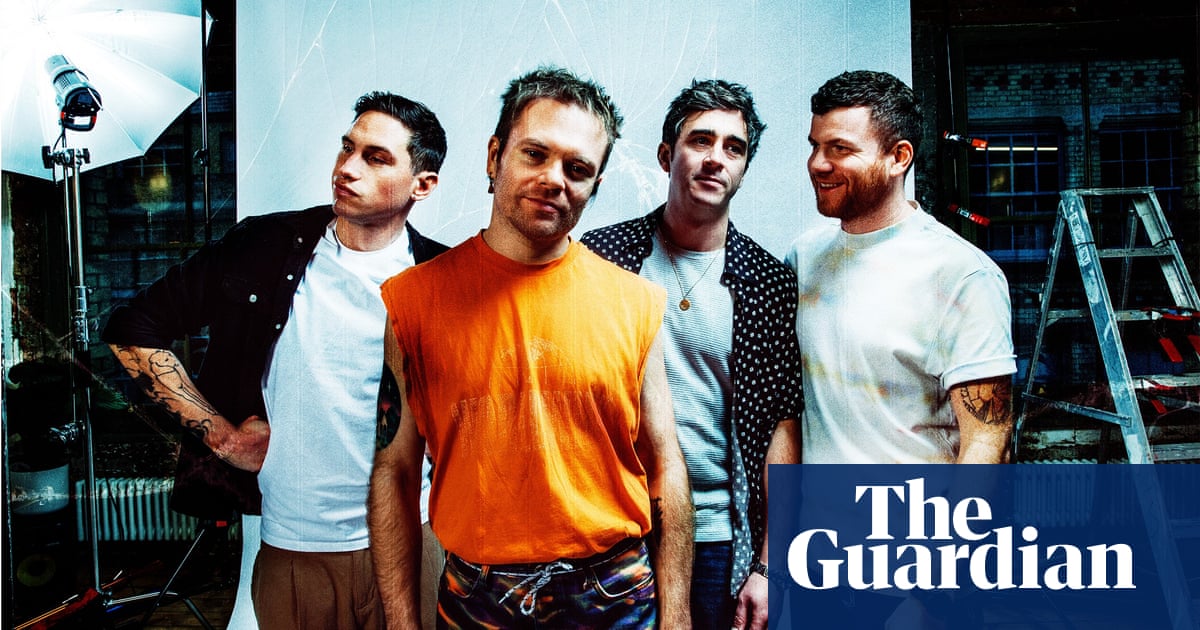
Peter, fully dressed, looks down at a boy in white trunks swimming a length of the pool below. Turquoise hills stretch away into sunlight behind them. David Hockney’s stunning diagram of LA heat and cool blue water, frozen in stylised ripples, appears perfectly lucid in its equipoise of figure, hue and geometry, yet also tense and mysterious. What is the relationship between the two men: the swimmer submerged and unaware, the sentinel watching unseen from above?
Portrait of an Artist (Pool with Two Figures) was painted in 1972. This monumental masterpiece has changed hands several times since, but never so conspicuously as in the winter of 2018, when it sold at Christie’s for $90m (£71m), breaking records for the most expensive work by a living artist.
The buyer was Pierre Chen, a Taiwanese multibillionaire in his late 60s, whose electronics company, Yageo, is a global leader in the passive components required for mobiles, laptops, desktops and cars. Chen founded the company in 1977, before he was even 21. In 1999 he also established the not-for-profit Yageo Foundation, which holds, or administers (or is it owns?), his massive art collection, a substantial tranche of which is now on display in Capturing the Moment at Tate Modern.
The first thing to say about this questionable enterprise is that Chen/Yageo owns some tremendous works of modern and contemporary art. He has the zeal and wealth of the titanic collector; and the advice, for more than 20 years, of a former Christie’s executive.
He owns an upside-down Georg Baselitz, several Picasso portraits and one of Francis Bacon’s screaming popes. He owns a quartet of Andy Warhol self-portraits in fading primary colours, and an eerie Warhol Double Marlon [Brando], silkscreened in sinister black on taupe.
He collects the enormous photographs of the German artist Thomas Struth: crowds overwhelmed by Géricault’s Raft of the Medusa in the Louvre, or simply flitting past like ephemeral ghosts before the deathless magnificence of Titian’s Assumption of the Virgin in Venice. These are all on show at Tate Modern, along with paintings by Gerhard Richter, Marlene Dumas, John Currin and Peter Doig.
The last, not incidentally, is one of Doig’s earliest and most valuable canoe paintings: in arsenical greens, the blond on board drifting an unsuspecting hand through ominous waters, based directly on a still from the horror film Friday the 13th.
So the promised connection between photography and painting is there in one fundamental sense. Namely that Chen buys both. It is also true that some of what he collects is painting based on photography (Warhol, Dumas, Doig), or photography that looks at painting (Struth, self-evidently). And in addition, he has some extraordinary works that unseat the imagery of both camera and brush by Richter.
Two landscapes by the German painter question the supposed truth of the original photographs to such an extent that one wonders whether these scenes – a Bavarian hillside, the motionless Venetian lagoon – contain hidden secrets. Richter’s transcriptions are neither sharp of focus nor rendering, his sporadic sfumato blurs implying that the world beyond the painted surface really is entirely lost to us.
A third painting shows the face of a long-dead woman: Richter’s Aunt Marianne, forever young and blond as she props baby Gerhard on a pillow in the 1930s. The silver-grey paint unites the two figures in hazy horizontal brushstrokes; something like distortion, or a memory one cannot bring into focus, or a presence that cannot be summoned from a photograph. Marianne was later sterilised and then murdered by the Nazis.
It is possible that visitors might make a connection back to another historic image four galleries earlier: Dorothea Lange’s immortal photograph of a destitute mother in a US pea-croppers’ camp in 1936, but I doubt it. This show is far too rambling and chaotic. To bolster Chen’s collection, Tate Modern includes ill-assorted works from its own, including strident new acquisitions by Christina Quarles and Laura Owens, and venerable portraits by Lucian Freud – including a deeply moving image of his mother painted by her deathbed – and Alice Neel, at least part of whose electrifying gifts as a painter come from living proximity to her New York subjects.
So the premise feels like nonsense. But worse still is the alignment of images. Did Lange take that heroic photograph – which resulted in emergency government aid – just to be hung in the same room as Bacon and Picasso as part of some vague talk about emotion and expression in 20th-century art? What has Neel got to do with Freud? Why are Hiroshi Sugimoto’s photographs of seas, touching on light, dark and the nature of infinity, related to abstract paintings?
The wall texts are almost comically simplistic. “While photographers grapple with the mechanics of the camera, painters work with the surface of the canvas and the texture of paint.” There is no thesis, no catalogue, no developed argument, barely a single striking idea on the subject of either painting or photography, let alone their relationship, even though this is art history 101.
It would have cost nothing to have shown the Hockney in a room of its own with the photos from which it derives (first serendipitously, and then by fascinating design) to open minds and eyes to the kind of visual knowledge the artist himself so much prizes. But all or any of this was too much trouble, unaccountably, for an exhibition running all the way through to the end of next January.
Why are the walls of one of our foremost public art museums being given to a private collector in this way? You may argue that this is a rare chance to see such great works here – though some are remarkably familiar from other loan shows – before they end up in someone else’s collection. For Pierre Chen follows the blue-chip market, after all.
Capturing the Moment is not a serious exhibition. To draw connections of any sort between the works feels ultimately specious. Some stuff we borrowed (I hope for free, given the burnishing effect of display in Tate Modern, though tickets are £20 a head) and some stuff we already owned. A more complacent exhibition cannot be imagined.












